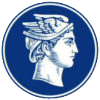A unique treasure! One of the most precious items in the library of the Hellenic Philatelic Society. One of the just 475 albums that were published world-wide by the Union Philatélique de Genève in 1929 and one of the very few that have been preserved in full until today. Copy numbered “404” of the collection of François Fournier forgeries, also known as “Forged Stamps of Geneva” is now digitalised and, for the first time, available to the public into five parts:

|

|

|

|

|
Background information:
François Fournier (24 April 1846 – 12 July 1917). Stamp forger.
At a relatively older age, he decided to get involved with philately. In May of 1904 he acquired the stock of Louis-Henri Mercier (real name Henri Goegg), who had meanwhile gone bankrupt. It is around that time that Fournier began his forgery business. It was mainly about rare stamps that had been withdrawn from circulation or stamps from dead countries. His intention was to sell them as copies, at a low price, to philatelists that could not afford them, no matter if they would trade them or sell them as genuine. He considered himself as a creator of ‘work of art’ and he would feel very happy to help philatelists cover their needs.
At the same time, he would run a successful “philatelic clinic”, which employed five ‘restorers’ to repair damaged stamps. The work included removing “SPECIMEN” overprints from high-value British colonial stamps, regumming of stamps, as well as the removal of pen cancels, which was considered Fournier’s specialty. The business grew rapidly. From 1910 to 1913 Fournier published his own journal and pricelist, called “Le Fac-Simile”. He had agents in 23 countries and in 1913 he stated to have over 10.000 customers and 10.000 subscribers. His last pricelist, in 1914, consisted of 3.671 different stamps for sale, although not all of them were created by him. He was never convicted for a criminal offence.
Following Fournier’s death, C. Hirschburger continued the business until his own death. Without anyone knowing what happened to the material and while many traders of the time were starting negotiations for its acquisition, E. Babaeff, a well-known stamp trader from Geneva, proposed that Union Philatélique de Genève (established in 1892) acquires the whole material in order to destroy it afterwards.
At the General Assembly convened by the President of the Philatelist Union of Geneva, E. Friederich, on December 9 th 1927, attended by 68 members, they decided to purchase the stock from the heirs of C. Hirschburger. The stamps that were acquired had an estimated weight of 800 kgs and a total value, based on the 1928 Yvert pricelist, of 2.846.796.500 french francs, assuming they were real.
Before destroying the material, the General Assembly decided to publish a certain number of independent compilations, in the form of deluxe albums, in order to be used as a reference point among philatelists. The General Assembly also set the number of copies of these albums at 475, so that only up to two copies are disposed of and only to philatelic societies. The album consisted of stamps, imprints of postmarks, as well as stamp overprints forged by Fournier. The album required the cutting and positioning of 1.200.000 stamps in the album’s pages. For obvious reasons, all stamps bared the imprint “FAUX” (on the front side of the stamp) or “Facsimile” (on the back side of the stamp). It also required 270.000 stamp imprints and another 248.000 overprints that were printed by Fournier’s printing machines especially for this purpose. All the work for assembling the material in the albums was performed by students of the Geneva School of Arts and Crafts. The remaining stamps that were not utilised ended up in the fire.
The Philatelist Association of Geneva used all the proceeds from the sale of these albums for covering the acquisition price for Fournier’s material. The printing machines, as well as the remaining printing equipment was later (1958) given to the PTT Museum of Vern. The Philatelist Association of Geneva holds six of these albums and has placed them for display numerous times. This action, being unique in the history of philately, is considered a highlight for the Philatelist Association of Geneva until to now.
As time passed by, many stamps or even pages were removed, resulting in very few from the initially 475 albums being saved in full until today. Album “404” is a rare sample of completeness and is being saved in the valuables’ section in the library of the Hellenic Philatelic Society.
*****
In 1929, our member A. Asimakopoulos (HPS Registry Number 118), donated the “404” album with the collection of Fournier’s forged stamps to the Hellenic Philatelic Society where it is saved up until now. The Hellenic Philatelic Society purchased the second copy that it was entitled to and afterwards donated it to the Association of Stamp Dealers “Hermes”, also in 1929.
